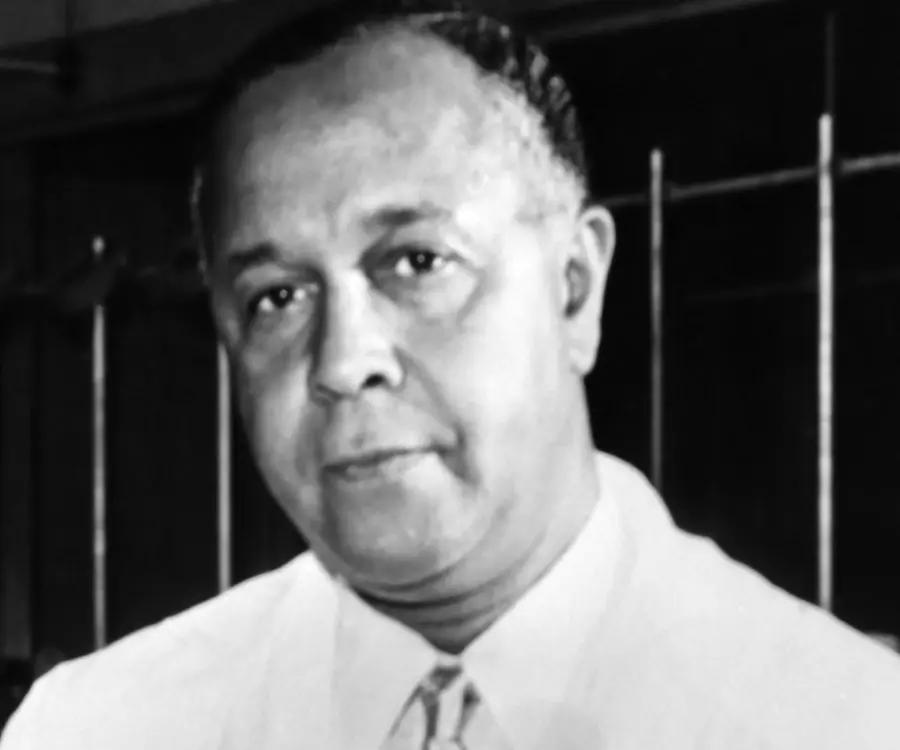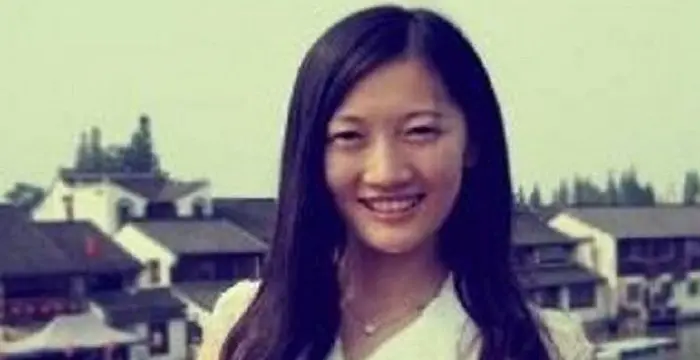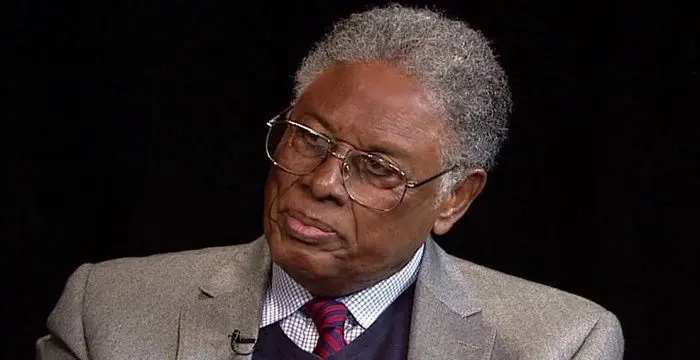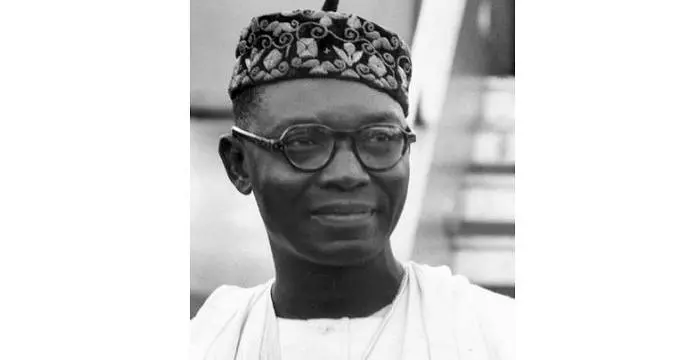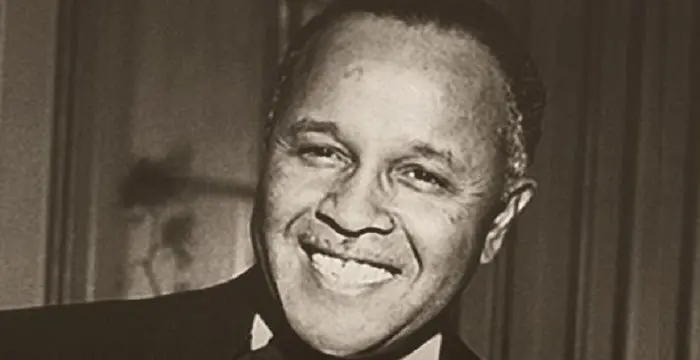
Percy Lavon Julian - Harvard University, Career and Childhood
Percy Lavon Julian's Personal Details
Percy Lavon Julian was an internationally reputed scientist who undertook pioneering research work in chemical synthesis of medicinal drugs from plants
| Information | Detail |
|---|---|
| Birthday | April 11, 1899 |
| Died on | April 19, 1975 |
| Nationality | American |
| Famous | Harvard University, Howard University, Scientists, Chemists |
| Spouses | Anna Roselle Johnson |
| Childrens | Percy Lavon Julian |
| Universities |
|
| Notable Alumnis |
|
| Founder / Co-Founder |
|
| Discoveries / Inventions |
|
| Birth Place | Montgomery |
| Gender | Male |
| Father | James Sumner Julian |
| Mother | Elizabeth Lena Julian |
| Sun Sign | Aries |
| Born in | Montgomery |
| Famous as | Chemist |
| Died at Age | 76 |
// Famous Chemists
Henry Cavendish
Henry Cavendish was a theoretical chemist and physicist, renowned for discovery of hydrogen and calculation of the mass of earth. To know more about his childhood, profile, timeline and career read on
Walter Kohn
Nobel Laureate Walter Kohn was an Austrian-born American theoretical chemist and physicist. Check out this biography to know about his childhood, life, achievements, works & timeline.
Jabir Ibn Hayyan
Jabir Ibn Hayyan was a medieval era polymath. Check out this biography to know about his life, works and achievements.
Percy Lavon Julian's photo
Who is Percy Lavon Julian?
Percy Lavon Julian was an internationally reputed scientist who undertook pioneering research work in chemical synthesis of medicinal drugs from plants. His painstaking research led to industrial production of drugs like cortisone, steroids and birth control pills. Born as a grandson of a freed slave in the racially segregated United States of America, he had to fight at every step to reach his goal. As a young man he was denied proper education and had to go to Vienna to earn his Ph. D. Later, he was refused professorship at DePauw University even though he had by that time become well-known for synthesizing physostigmine, a drug essential for treating the glaucoma. At an older age, he had his house firebombed for daring to live in a white majority locality. Yet, he never gave up and went on to patent 130 products. In the end his persistence bore fruits. By and by, he began to gain recognition. In 1946, Reader’s Digest, the popular monthly magazine published from the US, ran his life story under the title of “The Man Who Wouldn’t Give Up”. Indeed, he never gave up.
// Famous Harvard University
Bertil Gotthard Ohlin
Bertil Gotthard Ohlin was a famous Swedish economist. This biography profiles his childhood, family life & achievements.
Xi Mingze
Xi Mingze is the daughter of Chinese Leader Xi Jinping, Check out this biography to know about her birthday, childhood, family life, achievements and fun facts about her.
Susan Sontag
Susan Sontag is an American critical essayist, cultural analyst, novelist, political activist, filmmaker and playwright of international repute. Read on to find out more about her childhood, career, profile and timeline.
Childhood & Early Life
Percy Lavon Julian was born in Montgomery, Alabama on April 11, 1899. His father James Julian was a mail clerk in the Railway Service of the United States Post Office and his mother Elizabeth Lena Julian was a school teacher. Percy was the eldest of their six children.
During the time when Percy Julian was born racial segregation was a law in Alabama and lynching was not yet a federal crime. Percy started his education at a segregated elementary school and studied up to eighth grade. One day while walking in the woods he came across the body of a lynched man hanging from a tree. The memory stayed with him all his life.
As there was no high school for African-American children in Montgomery Percy was forced to join Alabama State Norman School, which laid more stress on practical training like hat making or blacksmithing. It taught very little science. Percy was forced to quench his thirst for knowledge at his father’s library.
In 1916, he entered DePauw University, located in Greencastle, Indiana. It accepted African American students, but they were not allowed to stay in college dormitory. By that time, Percy had set his goal on becoming a chemist. So, he found work in a fraternity house, which offered boarding and lodging in lieu of salary and continued his studies.
Because he came from a Normal School, which taught very little science, he had to take special classes. In spite of that, when he passed out in 1920, he was among the best boys of the class and received the highest grade. He also became a member of the Phi Beta Kappa Society and a valedictorian.
Career
In order to become a chemist, it was essential for Percy Lavon Julian to join a graduating school; but knew that nobody would take him because of his color. So he took up a teaching job at Fisk University, meant for African American students. He taught there for two years.
Later one of Percy’s old professors persuaded the Harvard University to allow him to do his M.S. Percy also received Austin Fellowship in chemistry, which solved the financial problem. He completed the course within a year and graduated in 1923. During this period, he started research work on organic chemistry.
Percy also wanted to earn his Ph. D from Harvard University and to teach there. Although he was initially invited to join the university, later it was withdrawn on the ground that white students may not like to study under a black professor. In spite of that, he stayed back at Harvard for three more years accepting the post of an instructor.
In 1926, Percy Julian joined West Virginia Collegiate Institute, meant for black student. The college had no infrastructure or laboratory and he was the only faculty at the department of chemistry. In spite of such hurdles, he started his research, synthesizing plant compounds like nicotine and ephedrine.
In 1928, Julian went to Washington to join Howard University, a historically important black college in America. There he designed a chemistry laboratory at a cost of one million dollar.
In 1929, while still working at the Howard University Julian received the Rockefeller Foundation fellowship. It enabled him to travel to Vienna and work under Ernst Späth, the famed Austrian chemist, who specialized in natural products. Julian’s research at the University of Vienna led to discovery of new chemical compounds in a plant called corydalis cava. He received his Ph.D. in 1931, making him the third African American to receive Ph.D. in chemistry. Away from racially segregated America, he also enjoyed the taste of freedom possibly for the first time.
On coming back, Julian joined the University of Howard; but soon he was caught up in the university politics and had to leave. In 1932, he joined DePauw University and continued with his research work. By that time, Joseph Pikl had joined him from Vienna.
In 1933, he and Joseph Pikl completed the total synthesis of physostigmine, a drug essential for treating glaucoma. In nature, it is found in Calabar beans and that too in a tiny amount. Therefore, it was important to synthesize it in the laboratory.
The research was earlier started by Robert Robinson of Oxford University. Although Robert was first to publish his thesis Julian and Pikl realized that it was impossible to produce physostigmine by following his process. They perfected the process and got the recognition they deserved.
In 1936, Percy Lavon Julian joined Glidden, a chemical company in Chicago as Director of Research at their Soya Division. That is mainly because he could not find a university that would hire an African American professor. He also got an offer from Institute of Paper Chemistry, located in Appleton; but could not accept it because the blacks were not to spend the night inside the city.
Julian and his team undertook extensive research works at Glidden. Under him, the company created a wide variety of products from soya bean such as lecithin, Aer-o-foam, stigmasterol etc. In 1953, Julian left Glidden mainly because it did not allow him to experiment on any other plant products.
In 1954, Julian formed his own company Julian Laboratories and continued with his research work. It mainly stressed on research on steroids. However, now he tried to create steroids from Mexican yam and invented improved version of cortisone. He also set up factories at Mexico and Guatemala.
In 1961, Julian sold his company for $2.3 million to Smith Kline, and started Julian Research Institute, a nonprofit organization. Its motto was to train young research chemist. By this time, he was the wealthiest African-American in the United States.
Major Works
Synthesis of physostigmine was the first major research work undertaken by Julian. In 1933, he and his co-researcher Pikl perfected the process of synthesizing physostigmine, which led to its mass production and this in turn made treatment of glaucoma affordable for all.
While at Glidden, Julian did extensive research on soya bean and invented many novel products from it. His first invention was a product called lecithin. It was used for preservation of food and also to make chocolate smooth. Aer-o-foam, a fire retardant used extensively during World War II by the US Navy, was also invented during this period.
He also invented the method of producing large amount of stigmasterol, an important steroid that contains sex hormones such as progesterone. His invention led to better treatment during pregnancy and prevention of miscarriages.
Julian also found a way to mass produce cortisone from stigmasterol. Cortisone was used in the treatment of inflammation and arthritis. However, prior to his invention, cortisone was extracted from cattle bile and was priced too high. After his invention its price was drastically reduced and became affordable for most.
Awards & Achievements
In 1947, Percy Lavon Julian was awarded with the Spingarn Medal by the National Association for the Advancement of Colored People (NAACP). In the same year, DePauw University awarded him with an honorary doctorate.
In 1950, the Chicago Chamber of Commerce named him “Chicagoan of the Year.”
In 1968, Julian won the Chemical Pioneer Award given by the American Institute of Chemists.
In 1973, Julian was elected to the National Academy of Sciences in recognitionof his contribution in the field of chemistry. He was the second African-American scientist to be inducted into this prestigious association.
Personal Life & Legacy
Percy Lavon Julian married Anna Roselle on December 24, 1935. She was a Ph.D. in Sociology, from University of Pennsylvania. The couple had two children Percy Lavon Julian, Jr. and Faith Roselle Julian. Percy Junior later became a prestigious civil rights lawyer in Madison, Wisconsin.
In old age, Julian developed liver cancer and died on April 19, 1975 from it. He was buried in Elm Lawn Cemetery in Elmhurst, Illinois. Even today, many budding scientists are inspired by his life not only for the drugs he had invented, but also for the battle he had to fight for doing what he did.
The legacy of Percy Lavon Julian is alive even to this day. Every year since 1975, the National Organization for the Professional Advancement of Black Chemists and Chemical Engineers presents the Percy L. Julian Award for Pure and Applied Research in Science and Engineering.
In 1990, Julian was inducted into the National Inventors Hall of Fame.
In 1999, the American Chemical Society recognized Julian's synthesis of physostigmine as a National Historic Chemical Landmark.
In 2011, the Albert Einstein College of Medicine named their qualifying exam preparation committee after Percy Julian.
// Famous Scientists
Juliane Koepcke
Juliane Koepcke is a German-Peruvian biologist, who was the lone survivor among the 92 passengers and crew of the ill-fated LANSA Flight 508 that crashed in the Peruvian rainforest on 24 December 1971. Know more about her life in this biography.
Henry Cavendish
Henry Cavendish was a theoretical chemist and physicist, renowned for discovery of hydrogen and calculation of the mass of earth. To know more about his childhood, profile, timeline and career read on
Konstantin Tsiolkovsky
Konstantin Tsiolkovsky was a Russian rocket scientist and a pioneer of astronautics. This biography provides detailed information about his childhood, family, personal life, career, achievements, etc.
Percy Lavon Julian's awards
| Year | Name | Award |
|---|---|---|
Other | ||
| 0 | Spingarn Medal | |
Percy Lavon Julian biography timelines
- // 11th Apr 1899Percy Lavon Julian was born in Montgomery, Alabama on April 11, 1899. His father James Julian was a mail clerk in the Railway Service of the United States Post Office and his mother Elizabeth Lena Julian was a school teacher. Percy was the eldest of their six children.
- // 1916In 1916, he entered DePauw University, located in Greencastle, Indiana. It accepted African American students, but they were not allowed to stay in college dormitory. By that time, Percy had set his goal on becoming a chemist. So, he found work in a fraternity house, which offered boarding and lodging in lieu of salary and continued his studies.
- // 1920Because he came from a Normal School, which taught very little science, he had to take special classes. In spite of that, when he passed out in 1920, he was among the best boys of the class and received the highest grade. He also became a member of the Phi Beta Kappa Society and a valedictorian.
- // 1923Later one of Percy’s old professors persuaded the Harvard University to allow him to do his M.S. Percy also received Austin Fellowship in chemistry, which solved the financial problem. He completed the course within a year and graduated in 1923. During this period, he started research work on organic chemistry.
- // 1926In 1926, Percy Julian joined West Virginia Collegiate Institute, meant for black student. The college had no infrastructure or laboratory and he was the only faculty at the department of chemistry. In spite of such hurdles, he started his research, synthesizing plant compounds like nicotine and ephedrine.
- // 1928In 1928, Julian went to Washington to join Howard University, a historically important black college in America. There he designed a chemistry laboratory at a cost of one million dollar.
- // 1929 To 1931In 1929, while still working at the Howard University Julian received the Rockefeller Foundation fellowship. It enabled him to travel to Vienna and work under Ernst Späth, the famed Austrian chemist, who specialized in natural products. Julian’s research at the University of Vienna led to discovery of new chemical compounds in a plant called corydalis cava. He received his Ph.D. in 1931, making him the third African American to receive Ph.D. in chemistry. Away from racially segregated America, he also enjoyed the taste of freedom possibly for the first time.
- // 1932On coming back, Julian joined the University of Howard; but soon he was caught up in the university politics and had to leave. In 1932, he joined DePauw University and continued with his research work. By that time, Joseph Pikl had joined him from Vienna.
- // 1933In 1933, he and Joseph Pikl completed the total synthesis of physostigmine, a drug essential for treating glaucoma. In nature, it is found in Calabar beans and that too in a tiny amount. Therefore, it was important to synthesize it in the laboratory.
- // 1933Synthesis of physostigmine was the first major research work undertaken by Julian. In 1933, he and his co-researcher Pikl perfected the process of synthesizing physostigmine, which led to its mass production and this in turn made treatment of glaucoma affordable for all.
- // 24th Dec 1935Percy Lavon Julian married Anna Roselle on December 24, 1935. She was a Ph.D. in Sociology, from University of Pennsylvania. The couple had two children Percy Lavon Julian, Jr. and Faith Roselle Julian. Percy Junior later became a prestigious civil rights lawyer in Madison, Wisconsin.
- // 1936In 1936, Percy Lavon Julian joined Glidden, a chemical company in Chicago as Director of Research at their Soya Division. That is mainly because he could not find a university that would hire an African American professor. He also got an offer from Institute of Paper Chemistry, located in Appleton; but could not accept it because the blacks were not to spend the night inside the city.
- // 1947In 1947, Percy Lavon Julian was awarded with the Spingarn Medal by the National Association for the Advancement of Colored People (NAACP). In the same year, DePauw University awarded him with an honorary doctorate.
- // 1950In 1950, the Chicago Chamber of Commerce named him “Chicagoan of the Year.”
- // 1953Julian and his team undertook extensive research works at Glidden. Under him, the company created a wide variety of products from soya bean such as lecithin, Aer-o-foam, stigmasterol etc. In 1953, Julian left Glidden mainly because it did not allow him to experiment on any other plant products.
- // 1954In 1954, Julian formed his own company Julian Laboratories and continued with his research work. It mainly stressed on research on steroids. However, now he tried to create steroids from Mexican yam and invented improved version of cortisone. He also set up factories at Mexico and Guatemala.
- // 1961In 1961, Julian sold his company for $2.3 million to Smith Kline, and started Julian Research Institute, a nonprofit organization. Its motto was to train young research chemist. By this time, he was the wealthiest African-American in the United States.
- // 1968In 1968, Julian won the Chemical Pioneer Award given by the American Institute of Chemists.
- // 1973In 1973, Julian was elected to the National Academy of Sciences in recognitionof his contribution in the field of chemistry. He was the second African-American scientist to be inducted into this prestigious association.
- // 1975The legacy of Percy Lavon Julian is alive even to this day. Every year since 1975, the National Organization for the Professional Advancement of Black Chemists and Chemical Engineers presents the Percy L. Julian Award for Pure and Applied Research in Science and Engineering.
- // 19th Apr 1975In old age, Julian developed liver cancer and died on April 19, 1975 from it. He was buried in Elm Lawn Cemetery in Elmhurst, Illinois. Even today, many budding scientists are inspired by his life not only for the drugs he had invented, but also for the battle he had to fight for doing what he did.
// Famous Howard University
Thomas Sowell
Thomas Sowell is an American economist, syndicated columnist, writer and social theorist. Check out this biography to know about his birthday, childhood, family life, achievements and fun facts about him.
Chadwick Boseman
Chadwick Boseman is an American actor best known for his role in the flick ’42.’ Check out this biography to know about his birthday, childhood, family life, achievements, and fun facts about him.
Marjorie Lee Browne
Marjorie Lee Browne was an eminent African-American mathematician & educator. This biography profiles her childhood, life, career and timeline.
Benjamin Nnamdi Azikiwe
Benjamin Nnamdi Azikiwe was the first president of Nigeria. This biography of Benjamin Nnamdi Azikiwe provides detailed information about his childhood, life, achievements, works & timeline.
Taraji P. Henson
Taraji Penda Henson is an African-American actress and singer. This biography profiles her childhood, life, acting career, achievements and timeline.
Anthony Anderson
Anthony Anderson is an American actor best known for appearing in his self-written, produced and starred sitcom, ‘All About the Andersons’. Check this biography to know more about his works, life, and timeline
Percy Lavon Julian's FAQ
What is Percy Lavon Julian birthday?
Percy Lavon Julian was born at 1899-04-11
When was Percy Lavon Julian died?
Percy Lavon Julian was died at 1975-04-19
Where was Percy Lavon Julian died?
Percy Lavon Julian was died in Waukegan
Which age was Percy Lavon Julian died?
Percy Lavon Julian was died at age 76
Where is Percy Lavon Julian's birth place?
Percy Lavon Julian was born in Montgomery
What is Percy Lavon Julian nationalities?
Percy Lavon Julian's nationalities is American
Who is Percy Lavon Julian spouses?
Percy Lavon Julian's spouses is Anna Roselle Johnson
Who is Percy Lavon Julian childrens?
Percy Lavon Julian's childrens is Percy Lavon Julian
What was Percy Lavon Julian universities?
Percy Lavon Julian studied at Harvard University,Howard University, 1923 - Harvard University, 1920 - DePauw University, 1931 - University of Vienna
What was Percy Lavon Julian notable alumnis?
Percy Lavon Julian's notable alumnis is Harvard University, Howard University
Which company or organization was founded by Percy Lavon Julian?
Percy Lavon Julian was the founder/co-founder of Julian Laboratories, Inc, Julian Research Institute
What is Percy Lavon Julian's inventions/discoveries?
Synthetic Cortisone was invented (or discovered) by Percy Lavon Julian
Who is Percy Lavon Julian's father?
Percy Lavon Julian's father is James Sumner Julian
Who is Percy Lavon Julian's mother?
Percy Lavon Julian's mother is Elizabeth Lena Julian
What is Percy Lavon Julian's sun sign?
Percy Lavon Julian is Aries
How famous is Percy Lavon Julian?
Percy Lavon Julian is famouse as Chemist



